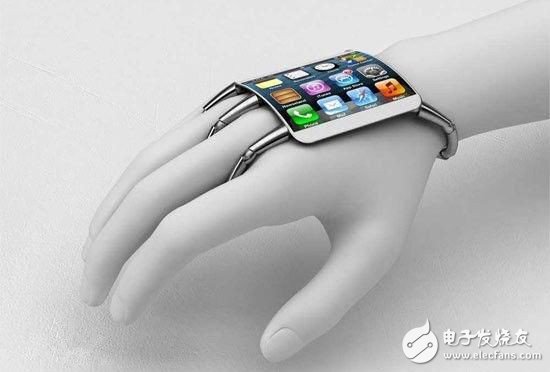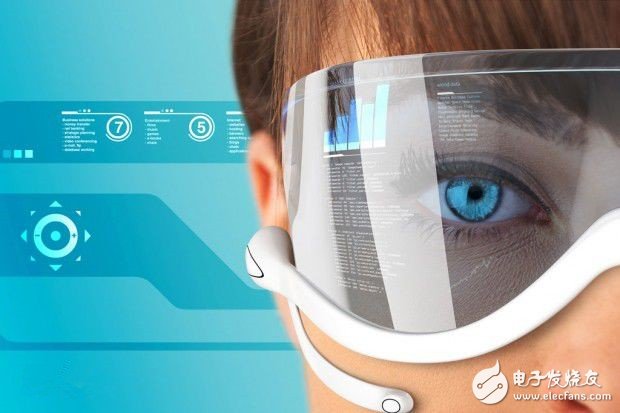In the context of rapid economic development, with the growing population, medical health issues have become a hot spot for people in China. In recent years, intelligent electronic medical health monitoring equipment has become popular in the world, becoming the “hidden treasure†of the new era; the most representative wearable medical equipment seems to appear in the streets all night, not only has an eye-catching appearance, It also spurs the wearer's interest in health monitoring tracking and is an integral part of family health. Below I open the back of wearing medical equipment for you. The history of wearable medical technology dates back to the 1960s, an innovative technology proposed by the Massachusetts Institute of Technology Media Lab. The principle is to embed multimedia information, sensors and wireless communication into the personal belongings in life. After the item is properly worn, the device can quickly acquire data and share the information data recorded in the device. After the data is processed and analyzed by the supporting software, the corresponding health value is obtained. And efficiently synchronize data with electronic display devices to play a role in real-time monitoring of wearer health. EVERY Lab believes that wearable medical devices will have a broad space for development in the field of medical and health, and will become ubiquitous and practical in the future under the trend of smart phones. The essence of wearable medical devices is the intervention and improvement of human health. It is a direct process from “data collection†to “direct transmissionâ€. It can prevent various common diseases in modern urban population in time. R&D personnel should always pay attention to the insights of the industry and learn more about the needs of the market. Nowadays, people are increasingly dependent on the Internet, and wearable medical devices play a very good role in it. The Internet will release massive amounts of data anytime and anywhere, whether it is around the development of the enterprise, or the personal consumption habits, identity characteristics, etc., have become stored in various forms of data. When health indicators, trajectories and lifestyle habits are imprinted everywhere, the danger of user privacy leaks is greatly exposed. The more data is uploaded, the greater the amount of private information. When you have enough data to compare and analyze, you can clearly understand the life track of the wearer. This is also a major difficulty in the future development of wearable medical devices. Will radiation from wearable medical devices affect the health of the wearer? In response to this problem, the editor deliberately consulted the relevant data to conclude that the smart bracelet converts body information such as pulse pressure and temperature into electrical signals through sensors, and then transmits them to data terminals such as mobile phones through electromagnetic waves. Because the transmission distance is short, the signal strength is weaker than the general signal received and transmitted by the mobile phone, and the radiation is relatively weaker. Therefore, the wearable medical equipment used in daily life is within the safe range.
A rice cooker or rice steamer is an automated kitchen appliance
designed to boil or steam rice. It consists of a heat source, a cooking bowl,
and a thermostat. The thermostat measures the temperature of the cooking bowl
and controls the heat. Complex rice cookers may have many more sensors and
other components, and may be multipurpose. Cooking rice has traditionally
required constant attention to ensure the rice was cooked properly, and not
burnt. Electric rice cookers automate the process by mechanically or
electronically controlling heat and timing, thus freeing up a heating element
on the cooking range that had to be otherwise occupied for rice cooking.
Although the rice cooker does not necessarily speed up the cooking process,
with an electric rice cooker the cook's involvement in cooking rice is reduced
to simply measuring the rice, preparing the rice properly and using the correct
amount of water. Once the rice cooker is set to cook, the rice will be cooked
with no further attention.
Features:
For modern home
rice cookers, the smallest single-person model cooks 1 rice cup (180 ml),
whereas large models can cook 10 cups. Commercial models can cook 20 or more
cups. As a possible source of confusion, model specifications and names may
list either cooked or uncooked capacity. Rice roughly doubles in size during
cooking; therefore, a 10 cup (uncooked) rice cooker can produce up to 20 cups
of cooked rice. The prices vary greatly, depending on the capacity, features,
materials used, and the country of origin.
The majority of
modern electric rice cookers are equipped with a stay-warm or keep-warm feature,
which keeps the rice at an optimal temperature for serving without over-cooking
it. Some gas cookers also have electric stay-warm mechanism. However, the
usefulness of this feature degrades over time, a microwave may be more energy
efficient or better suited to reheat rice that will sit longer than four hours.
Some rice
cookers use induction heating, with one or more induction heaters directly
warming the pot. This can improve energy efficiency.
Most modern
rice cookers use aluminium for the inner cooking bowl. There are some models
that use stainless steel instead of aluminium. Various other materials, such as
copper, pure carbon, ceramic, and diamond powder coating, may be used for
higher heat conductivity or better taste.
The
pressure-cooking models can raise the water's boiling point higher, e.g., from
100 °C at 1.0 atm up to about 110 °C at 1.4 atm, which speeds cooking. The
pressure-cooking models can also be used in high altitude areas, where the
boiling temperature is below 100 Celsius. Pressure cookers are also suitable
for cooking brown rice (which contains oils and bran fiber that cook
differently from pure white rice starch). Some pressure rice cookers have a
varying pressure control mechanism (named the "dual-pressure" method)
that creates repeated pressure/release cycles during the cooking.
There also
exist mechanisms to collect and return the boiled over liquid to the inner rice
bowl.
Many cookers now have microprocessor-controlled cooking cycles, which are often used to adjust for rice and
cooking type.
Applications
Rice cookers are typically used for the preparation of plain or
lightly seasoned rice. Each rice cooker model may be optimized to cook a
certain type of rice best. For example, most Japanese rice cookers are
optimized for cooking Japanese rice and may not be the best for other types of
rice[citation needed], although cooking time can be lengthened simply by more
water.
The typical method of cooking long grain rice
is boil-and-strain and/or steaming method. The absorption method used in
Japanese rice cookers will produce slightly different texture and taste,
usually stickier rice.
Brown rice generally needs longer cooking
times than white rice, unless it is broken or flourblasted (which perforates
the bran).
Different varieties of rice need different
cooking times, depending on their grain size, grain shape, and grain
composition. There are three main types of Asian rice: Oryza sativa subsp.
indica, i.e., Indian rice (long grain rice, e.g., basmati rice and Thai jasmine
rice), O. sativa subsp. javanica, i.e., Java rice (large grain rice) and O.
sativa subsp. japonica, i.e., Japanese rice (medium grain rice, e.g., Calrose
rice, short grain rice, e.g., most Japanese rice and risotto rice).
African rice, Oryza glaberrima, is an entirely
separate species, but can be cooked in the same way. Zizania is not even in the
same genus, although it is often called a rice (or "water oats"); it,
too, can also be cooked in a rice cooker.
A
rice cooker can be used to cook many boiled or steamed granular foods, such as
pot barley, bulgar wheat, and dal. Provided the ingredients have similar
cooking times, a rice cooker can cook mixtures such as khichdi. Some rice
cookers can be used as automated couscoussiers, cooking couscous and a stew
simultaneously.
Rice Cooker Rice Cooker,Drum Rice Cooker,Deluxe Rice Cooker,Straight Rice Cooker Guangzhou Taipeng Electrical Appliances Technology CO., LTD. , https://www.kettles.pl
